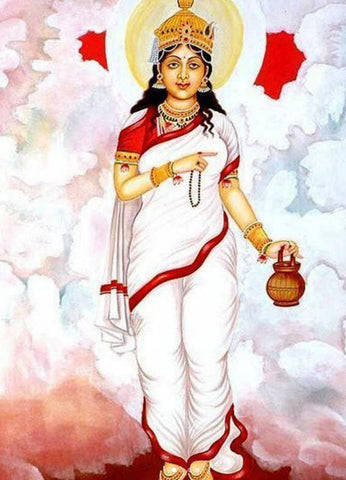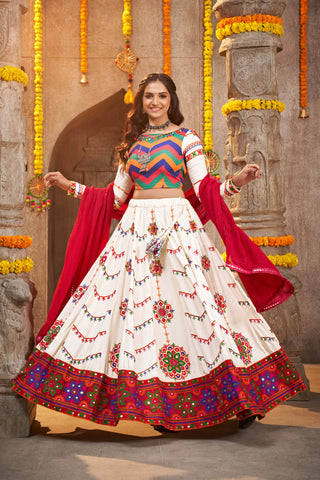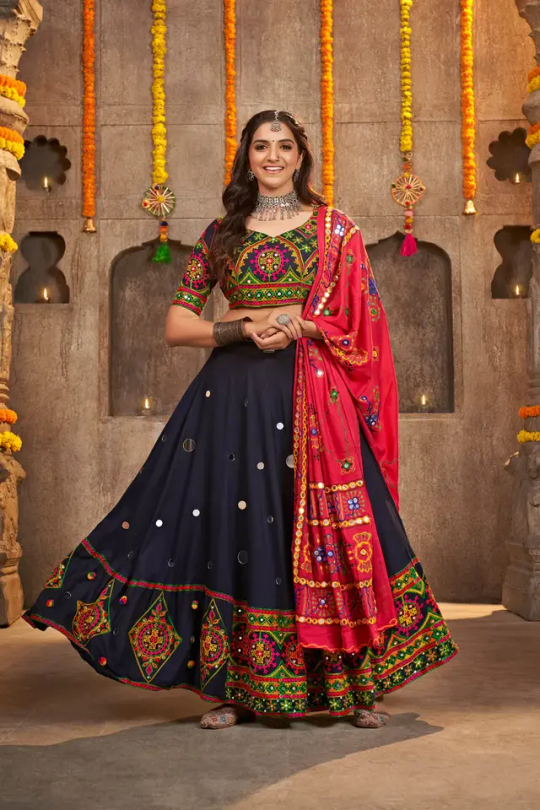#shashthi
Text
🦚 चम्पा षष्ठी - Champa Shashthi
❀ चंपा षष्ठी व्रत भगवान शिव एवं माता पार्वती के बड़े पुत्र भगवान कार्तिकेय को समर्पित है।
❀ चंपा षष्ठी को स्कंद षष्ठी के नाम से जाना जाता है।
❀ एक अन्य मान्यता के अनुसार, यह त्यौहार भगवान शिव के माने गये अवतार खंडोबा जी को समर्पित है।
❀ भगवान शिव का यह खंडोबा रूप किसानों, चरवाहों और शिकारियों का स्वामी माना जाता है।
खंडोबा मंदिर, चम्पा षष्ठी प्रचलित कथा को हिन्दी मे पढ़ने के लिए नीचे दिए लिंक पर क्लिक करें 👇
📲 https://www.bhaktibharat.com/festival/champa-shashthi

For Quick Access Download Bhakti Bharat APP:
📥 https://play.google.com/store/apps/details?id=com.bhakti.bharat.app
🍚 अन्नपूर्णा व्रत - Annapurna Vrat
📲 https://www.bhaktibharat.com/festival/annapurna-vrat
2 notes
·
View notes
Text

Shashthi vibes: The beginning of a week-long celebration filled with devotion and festivity.
#durgapuja#durgapuja2023#shashthi#shashthi2023#elephantbeachtour#havelockislandtrip#andamantour#andamantourpackages#goandamanholidays#tourismday#travel#incredibleindia#visualsoflife#streetsofindia#triptocommunity#beautifuldestinations#rainforest#andamantravelagent#andamantourismofficial#andamantravel#andamannews#deals#booknow#andamanculture#andamandiaries#viraltravel#andamanpackages#andaman#andamanlife#andamanhoneymoon
0 notes
Text

Happy Durga Pooja to everyone!
May Durga Ma bless everyone with peace, positivity, strength to sail through tough times, wisdom to stand by right, to love ourselves and others for who we are..
Maa.. a warm welcome with open arms and heart..
Shubho Shoshti..
1 note
·
View note
Text
Hal Shashthi 2024: क्यों मनाई जाती है हलषष्ठी, जानिए इसका महत्वHal Shashthi 2024: भाद्रपद मास कृष्ण पक्ष षष्ठी को श्रीकृष्ण के बड़े भाई बलराम जी का जन्मोत्सव 'हल षष्ठी' पर्व के रूप में मनाया जाता है।
#puja path#hal shashthi 2024#balram jayanti#hal shashthi 2024 muhurat#hal shashthi 2024 vrat#how to celebrate hal shashthi#hal chhath#hal shashthi#when is hal chhath#hal chhath 2022Dharm News in Hindi#Vrat News in Hindi#Vrat Hindi News
0 notes
Text
Underrated af Hindu deities that DESERVE recognition:
1. Pratyangira: Goddess of magical spells.
2. Narasimhi: Goddess of witchcraft.
3. Aranyani: Goddess of forests.
4. Yami: Goddess/lady of life and sister of Yama.
5. Pushan: God of marriage, travelling, roads and feeding cattle.
6. Varuni: Goddess of wine.
7. Kamakhya: Goddess of desire.
8. Ratri: Goddess of night.
9. Nasatya and Dasra (Ashwins): Twin gods of medicine.
10. Annapurna: Goddess of food and nourishment.
11. Shakambhari: Goddess of vegetation.
12. Mariamman: Goddess of rain.
13. Shitala: Goddess of cold and disease.
14. Dhata: God of health and magic.
15. Vishwakarma: God of architecture.
16. Skanda: God of war.
17. Shani: God of karma and justice.
18. Manasa: Goddess of snakes and fertility.
19. Kubera: God of wealth.
20. Nidra: Goddess of sleep.
21. Chamunda: Goddess of war, famine and fear.
22. Akhilandeshwari: The Cosmic Egg, she who is never not broken, Goddess of brokenness.
23. Dhumavati: The Widow Goddess.
24. Chitragupta: God of justice.
25. Murugun: God of war, victory and knowledge.
26. Jyestha: Goddess of laziness and elder sister of Lakshmi.
27. Alakshmi: Goddess of misfortune and twin sister of Lakshmi.
28. Amsha and Vivasan: Solar deities.
29. Dantakali: Goddess of teeth.
30. Himavat: God of the Himalayas.
31. Samudra: God of seas and oceans.
32. Dyaus: God of sky.
33. Tapati: Sun Goddess.
34. Rohini: Moon Goddess and one of the Nakshatra deities.
35. Pramatha: God of ghosts...? (sources unclear)
36. Shachi: Goddess of jealousy.
37. Jara: Goddess of old age and daughter of death.
38. Mara: Goddess of death.
39. Chhaya: Goddess of shadows.
40. Ushas: Goddess of dawn.
41. Sanjna/Sandhya: Goddess of dusk, clouds and chastity, sister of Kama.
42: Bhramari: Goddess of bees.
43: Bankamundi: Goddess of hunting and fertility.
44: Bhadra: God of hunting.
45. Rundas: God of hunting and fortune.
46. Vasanta: God of spring and flowers.
47. Savitr: Solar deity, mostly of sunsets and sunrises. Also god of motion.
48. Anila: God of cosmic elements.
49. Danu: Goddess of (primordial) waters.
50. Revanta: God of hunting, horses and warriors.
51. Bahuchara: Goddess of chastity and fertility.
52. Rati: Goddess of love, desire and passion.
53: Kanyakumari: Goddess of chastity.
54. Nirrti: Goddess of death, decay and sorrow.
55: Kotravai: Goddess of war and victory.
56: Vac: Goddess of speech.
57: Sarama: Goddess of intuition (and dogs but not that sure)
58: Karni: Goddess of power, victory and mice.
59. Asvajayu: Goddess of fortune, joy, good luck and happiness.
60. Dhisana: Goddess of prosperity.
61. Mohini: Goddess of enchantment.
62. Lajja Gauri: Goddess of abundance, fertility and sexuality.
63. Shashthi: Goddess of vegetation and reproduction (also benefactor and protector of children).
64. Anumati: Moon goddess of spirituality.
65. Poleramma: Goddess of plague and smallpox.
66. Phul: Goddess of disease.
67. Santoshi: Goddess of satisfaction.
68. Tara: Goddess of felicity and optimism (she is different from Tara, who is a Mahavidya, a tantric form of Parvati).
69. Oladevi: Goddess of cholera.
70. Apam Napat: God of water.
71. Bhaga: God of wealth.
72. Vinayaki: Elephant-headed Goddess of wisdom
73. Chelamma: A Scorpion Goddess
74. Saranyu: Goddess of clouds.
Note: When I first made this post I didn't quite notice it but here are a few things.
1. Some of these Gods and Goddesses are the same person. Like Pratyangira and Narasimhi, or Murugun and Skanda, etc.
2. I didn't add many lesser known forms of Parvati and Lakshmi, but many ppl have added them and I'm grateful.
#reblog if you know more#hindu mythology#hinduism#sanatandharma#sanatan dharma#hindu#hindu gods#hindu deities#hindu myths#hindublr#desiblr#desi tumblr#desi tag#hindudeity
720 notes
·
View notes
Note
For celestial NATO, since there is about 27 pantheons I imagine that everyone is arguing about how to punish Azure. In the end they have Xi Wagmu decide whether she herself will deal with him or have one of the regions' gods execute him.
This would also spark an investigation in Diyu featuring the underworld gods(they have to share after all). Hades, Pluto, Osiris, Hel, Ah Puch, Mictlantecuhtli, Arawn, Emma-ō(Enma depending) and Yeomna have their strongest soldiers to make sure no one is trying to escape *coff*TenKings*coff*
Ooof. Its like in the Rhino King chapter of JttW where the Celestial Realm had to have an internal investigation in order to determine the baddie's true identity. Everybody getting audited by an outside pantheon.
I feel like they pass Azure's judgement onto his own bodhisattva Manjushri - who has forgiven the bad kitty at least twice before. The most Azure ends up getting is community service and public cat shaming. Meanwhile, Peng is in birdy timeout in a big Tweety Bird cage.
Azure has to hold a sign saying something like:

The cat gods approve. The other gods are confused why this is considered an adaquate punishment.
Bastet: "You don't understand because you don't own a cat."
Shashthi, Freya, Ishtar, and Korravai: *all nod in agreement*
But yeah a bunch of the different Underworlds are under internal investigation because of the Scroll of Memory situation. The Ten Kings are on house arrest until things get cleared up.
49 notes
·
View notes
Text
The Evolution of Madhubani Art Over Time

Madhubani art (also Mithila art) is a style of painting practiced in the Mithila region of India and Nepal. It is named after the Madhubani district of Bihar, India, which is where it originated. Artists create these paintings using a variety of mediums, including their own fingers, or twigs, brushes, nib-pens, and matchstick. The paint is created using natural dyes and pigments. The paintings are characterized by their eye-catching geometrical patterns. There is ritual content for particular occasions, such as birth or marriage, and festivals, such as Holi, Surya Shasti, Kali Puja, Upanayana, and Durga Puja.
Madhubani painting (or Mithila painting) was traditionally created by the women of various communities in the Mithila region of the Indian subcontinent. It originated from Madhubani district of the Mithila region of Bihar. Madhubani is also a major export center of these paintings.
This painting as a form of wall art was practiced widely throughout the region; the more recent development of painting on paper and canvas mainly originated among the villages around Madhubani, and it is these latter developments that led to the term “Madhubani art” being used alongside “Mithila Painting.”
Mithila paintings mostly depict people and their association with nature and scenes and deities from the ancient epics. Natural objects like the sun, the moon, and religious plants like tulsi are also widely painted, along with scenes from the royal court and social events like weddings. In this paintings generally, no space is left empty; the gaps are filled by paintings of flowers, animals, birds, and even geometric designs.[citation needed] Traditionally, painting was one of the skills that was passed down from generation to generation in the families of the Mithila Region, mainly by women .
It is still practiced and kept alive in institutions spread across the Mithila region. Asha Jha of Madhubanipaints in Darbhanga,
Vaidehi in Madhubani, Benipatti in Madhubani district and Gram Vikas Parishad in Ranti are some of the major centres of Madhubani painting which have kept this ancient art form alive.
Contributions:
The Madhubani painting tradition played a key role in the conservation efforts in India in 2012, where there was frequent deforestation in the state of Bihar. Shashthi Nath Jha, who runs the Gram Vikas Parishad, an NGO, started the initiative as an attempt to protect local trees that were being cut down in the name of expanding roads and development. The main reason behind this was that the trees were traditionally adorned with forms of gods and other religious and spiritual images such as those of Radha-Krishna, Rama-Sita, scenes from Ramayana and Mahabharata and other mythologies.
Darbhanga MP Gopal Jee Thakur started the tradition of honouring people with Mithila Painting in Indian Politics.
Awards:
Madhubani painting received official recognition in 1969 when Sita Devi received the State award by Government of Bihar. Mamta Devi from the village Jitwarpur has also got National Award. Jagdamba Devi from Bhajparaul, Madhubani was given Padma Shri in 1975 and the National Award to Sita Devi of Jitwarpur village near Madhubani.
Jagdamba Devi’s foster son Satya Narayan Lal Karn and his wife Moti Karn are also well-regarded Mithila artists, and they won the National Award jointly in 2003. Sita Devi received the Padma Shri in 1981. Sita Devi was also awarded by Bihar Ratna in 1984 and Shilp Guru in 2006.
In 1984 Ganga Devi was awarded by Padma Shri. Mahasundari Devi received the Padma Shri in 2011. Baua Devi, Yamuna Devi, Shanti Devi, Chano Devi, Bindeshwari Devi, Chandrakala Devi, Shashi kala Devi, Leela Devi, Godavari Dutta, Asha Jha and Bharti Dayal were also given the National award.
Chandrabhushan (Rasidpur), Ambika Devi (Rasidpur), Manisha Jha were also given the National award.[citation needed] In 2020, Madhubani artist Dulari Devi won the Padma Shri for contributions to art.
Styles:
Mithila art has five distinctive styles:
Bharni
Katchni
Tantrik
Godna
Kohbar
In the 1960s Bharni, and Tantrik styles were mainly done by Brahman women in India and Nepal. Their themes were mainly religious and they depicted Gods and Goddesses paintings. People of other castes included aspects of their daily life and symbols, the story of Raja Shailesh (guard of the village) and much more, in their paintings. Nowadays Madhubani art has become a globalised art form, so there is no difference in the work on the basis of the caste system. They work in all five styles. Mithila art has received worldwide attention.
The paintings were traditionally done on freshly plastered mud walls and floors of huts, but now they are also done on cloth, handmade paper and canvas.
Madhubani paintings are made from the paste of powdered rice. Madhubani painting has remained confined to a compact geographical area and the skills have been passed on through centuries, the content and the style have largely remained the same. Thus, Madhubani painting has received GI (Geographical Indication) status. Madhubani paintings use two-dimensional imagery, and the colors used are derived from plants. Ochre, Lampblack and Red are used for reddish-brown and black, respectively.
For more info visit our Website — https://madhubniart.com/
Best Madhubani art near me, Cheapest Madhubani art, Cheapest Madhubani art near me, Madhubani art gallery, madhubani art history, Madhubani art information, madhubani art about, madhubani art book, madhubani art types, Madhubani Art Pen Holder, Madhubani Art Beautiful Jar, Madhubani Art Bowl, Madhubani Art Ceramic Mugs
8 notes
·
View notes
Text
Navratri 2023 Colors: A Guide to the Significance of 9 Days of Sharad Navratri Attire
Navratri, the nine-night festival dedicated to the worship of Goddess Durga, is celebrated with great enthusiasm and devotion in India, especially in states like Maharashtra and Gujarat. One of the captivating traditions during Navratri is the daily choice of colors to wear, each associated with a different form of the goddess. This practice holds deep significance in Hindu culture, symbolizing purity. Let's take a closer look at the Navratri colors to be followed this year and the gods and goddesses they represent.
Day 1: Pratipada - Shailputri
On the first day of Navratri, Goddess Shailputri is venerated, also known as Parvati, the daughter of the Himalaya mountains. The color for this day is Orange, symbolizing energy and enthusiasm.

Image Courtesy: Pinterest
Adorn yourself in an elegant Orange and red Ikkat Pure Pochampally Handloom Saree to honor the goddess's strength and grace.

Day 2: Dwitiya - Brahmacharini
Mata Brahmacharini, the goddess celebrated on the second day, signifies eternal peace. White, the color of serenity, is the choice for Day 2.

Image Courtesy: Online live daily news
A Pearl White Color Mirror Work Viscose Rayon Navaratri Lehenga Choli reflects the goddess's tranquil and pure nature.

Day 3: Tritiya - Chandraghanta
On Tritiya, we worship Mata Chandraghanta, who rides a lion and is believed to vanquish evil forces. Red, the color of health, courage, and love, is the color of choice.

Image Courtesy: Pinterest
Embrace this vibrant hue with a Red saree cutdana work to channel your inner strength.

Day 4: Chaturthi - Kushmanda
The fourth day celebrates Mata Kushmanda, who is said to have created the cosmic egg with her smile, bringing light to the universe. Royal Blue, representing elegance and royalty, is the color for this day.

Image Courtesy: Pinterest
Grace the occasion with a splendid Navratri Chaniya Choli in this mesmerizing shade of Blue.

Image Courtesy: Pinterest
Day 5: Panchami - SkandMata
Mata Skandmata, honored on the fifth day, is associated with good health. This day is dedicated to Green, symbolizing nature and prosperity.

Image Courtesy: Pinterest
Wear this beautiful green saree to align with the goddess's blessings.

Day 6: Shashthi - Katyayani
Mata Katyayani, the sixth form of Mata Durga, is the granter of health and happiness. Grey, a vibrant and versatile color, is chosen for this day's celebrations.

Image Courtesy: Pinterest
Grace the occasion with a Grey Anarkali Dress

Day 7: Saptami - Kaalratri
Maa Kaalratri, worshipped on the seventh day, protects against evil forces. Orange is the color for Saptami, reflecting the fervor of Navratri celebrations.

Day 8: Ashtami - Mahagauri
Maa Mahagauri, associated with peace and intelligence, is revered on the eighth day.

Image Courtesy: Pinterest
Adorn yourself in Peacock Green indian saree, a sublime shade that complements the goddess's virtues.

Day 9: Navami - Siddhidatri
On the ninth and final day, we honor Maa Siddhidatri, the granter of divine blessings. Pink, a combination of the energy of red and the stability of blue, is chosen. This color symbolizes opulence and richness as we seek the goddess's supreme blessings.

Image Courtesy: Pinterest
During Navratri, people wear different colors each day to show that they are all together and devoted. It's like a colorful journey through different forms of the Goddess Durga, who is very special. When you celebrate Navratri, make sure to wear colors that show how much you love and respect the divine.
Explore the exquisite collection of Navratri attire at Mohi Fashion, featuring enchanting Chaniya Choli, Navratri Ghagra Choli, Anarkali suit, sarees, and stylish sharara suit, all available online. We proudly offer worldwide shipping, catering to fashion enthusiasts in the USA, Australia, UK, Canada, India, and beyond. Join us in celebrating the spirit of Navratri with elegance and style.
#navratri#lehenga#indian ethnic wear#sareelove#sareeonline#bride#wedding#indianfashion#sareecollection#bollywood#bollywood actress#ootd
2 notes
·
View notes
Text
Today's date - 18 September 2024 Vedic Hindu calendar with accurate calculations and Shraddha-worthy dates (Part-2)

⛅Date - 18 September 2024
⛅Day - Wednesday
⛅Vikram Samvat - 2081
⛅Ayan - Dakshinayan
⛅Season - Autumn
⛅ Month - Bhadrapada
⛅ Paksha - Shukla
⛅ Date - Purnima till 08:04 am, thereafter Pratipada till 04:19 am on September 19, thereafter Dwitiya
⛅ Nakshatra - Purva Bhadrapada till 11:00 am, thereafter Uttar Bhadrapada
⛅ Yoga - Gand till 11:29 pm Thereafter increase
⛅Rahu Kaal – 12:33 pm to 02:05 pm Till
⛅Sunrise - 06:27
⛅Sunset - 06:40
⛅Disha Shool - In North direction
⛅Brahma Muhurta - From 04:53 to 05:40 in the morning
⛅Abhijit Muhurta - None
⛅Nishita Muhurta - From 12:10 am to night of September 19 Till 12:57 September 19
Vrat festival details - Sanyasi Chaturmas ends, Shraddha of Ashvin Krishna Paksha Pratipada
⛅Special - On the day of Purnima, sexual intercourse with a woman and eating and applying sesame oil is prohibited and do not eat Kushmanda (pumpkin, pumpkin) on Pratipada because This is the destroyer of wealth. (Brahmavaivart Purana, Brahma Khand: 27.29-34)
🔹Shraddh-worthy dates (Part-2)🔹
🔹Pratipada is for wealth and property and the things obtained by the person performing Shraddh are not destroyed.
🔹The person who performs Shraddh on Dwitiya becomes a king.
🔹 Tritiya is prescribed for those who wish to attain good wealth. This Tritiya is the destroyer of enemies and destroys sins.
🔹The one who performs Shradh on Chaturthi sees the weaknesses of enemies i.e. he gets to know all the tricks of enemies.
🔹Panchami The one who performs Shraddha on this tithi attains the best Lakshmi.
🔹The one who performs Shraddha on Shashthi tithi is worshiped by the gods.
🔹One who performs Shraddh on Saptami day gets the merits of great Yagyas and becomes the lord of Ganas.
🔹One who performs Shraddh on Ashtami day gets complete prosperity.
🔹One who performs Shraddh on Navami day gets abundant wealth and prosperity as per his wish He gets a woman who is favorable to him.
🔹A person who performs Shraddha on Dashami Tithi gets the Lakshmi of Brahmatva.
🔹Shraddha on Ekadashi is the best donation. It gives the knowledge of all the Vedas. All his sins are destroyed and He attains constant prosperity.
🔹It is said that the Shraadh of Dwadashi Tithi brings welfare to the nation and abundant food.
🔹Through the Shraddh of Trayodashi, one gets progeny, wisdom, retention power, freedom, good health, long life and prosperity.
🔹The Shraddh of Chaturdashi is performed for the young dead and Shraddh should also be performed on Chaturdashi for those who were killed by weapons. .
🔹The Shraddh of Amavasya is performed for all the people born in odd numbers i.e. for those who have a son after three daughters or daughters after three sons. Shraddh should also be performed on this day for those who have twins.
🔹Shraddh of married or widowed women It is performed on the ninth day of Krishna Paksha in Ashwin (Bhadrapada according to Gujarat-Maharashtra).
🔹Shraddh of children is performed on the Trayodashi day of Krishna Paksha.
🔹The Shraddh of those who died in an accident or after being injured in a war is performed on the Chaturdashi date of Krishna Paksha.
🔹Those who perform Shraddh rituals in this manner achieve all their wishes and enjoy heaven for eternity. Magha Nakshatra, it gives ancestors the desired success. Therefore, the Shraddha performed on the days of the said Nakshatra is called Akshaya. The ancestors always like it more.
🔹Those who do not worship ancestors during Ashtakas, their donation of Shraddha, etc. on these occasions is of no use. Those who do this go to the gods i.e. heaven and those who do not do this go to the Tiryak (birds etc.) lowly species.
🔶 Performing Shraddha at night is prohibited. (Vayu Purana: 78.3)
0 notes
Text
🦚 चम्पा षष्ठी - Champa Shashthi

❀ चंपा षष्ठी व्रत भगवान शिव एवं माता पार्वती के बड़े पुत्र भगवान कार्तिकेय को समर्पित है।
❀ चंपा षष्ठी को स्कंद षष्ठी के नाम से जाना जाता है।
❀ एक अन्य मान्यता के अनुसार, यह त्यौहार भगवान शिव के माने गये अवतार खंडोबा जी को समर्पित है।
❀ भगवान शिव का यह *खंडोबा* रूप किसानों, चरवाहों और शिकारियों का स्वामी माना जाता है।
खंडोबा मंदिर, चम्पा षष्ठी प्रचलित कथा को हिन्दी मे पढ़ने के लिए नीचे दिए लिंक पर क्लिक करें 👇
📲 https://www.bhaktibharat.com/festival/champa-shashthi
For Quick Access Download Bhakti Bharat APP:
📥 https://play.google.com/store/apps/details?id=com.bhakti.bharat.app
🍚 अन्नपूर्णा व्रत - Annapurna Vrat
📲 https://www.bhaktibharat.com/festival/annapurna-vrat
#ChampaShashthi #Shashthi #Margashirsha #VratKath #Annapurna #AnnapurnaVrat
0 notes
Link
0 notes
Text
Aaj Ka Panchang, September 9, 2024: Tithi, Vrat, and Today’s Shubh, Ashubh Muhurat
Last Updated: September 09, 2024, 05:00 IST
Aaj Ka Panchang, September 9, 2024: It is expected that the sun will rise at 6:03 AM and set at 6:33 PM. (Image: Shutterstock)
Aaj Ka Panchang, September 9, 2024: Check out tithi, auspicious and inauspicious timings, and other details here.
AAJ KA PANCHANG, SEPTEMBER 9, 2024: Shukla Paksha’s Shashthi and Shukla Saptami Tithis would take place on…

View On WordPress
0 notes
Text
Understanding Shashthi Shradh: Significance, Rituals, and Traditions
In the rich tapestry of Indian spirituality and customs, Shashthi Shradh stands out as a significant ritual, observed by families to honor their ancestors. This observance, deeply rooted in tradition, holds a place of reverence and devotion in the lives of many Hindus. This blog post delves into the essence of Shashthi Shradh, its importance, and the practices associated with it, including the…
0 notes
Text
Goddess Shashthi: The Guardian of Children and Fertility
Goddess Shashthi, also known as Shashthi Devi or Sashti, is a revered deity in Hinduism, particularly in the eastern states of India like West Bengal, Assam, and Odisha.
0 notes
Text

Shradh (Pitru Paksha): Ancestral Blessings, Dates, Rituals, and Significance
In the rich tapestry of Vedic traditions within Hinduism, numerous customs, fasts, and festivals celebrate various aspects of life and spirituality. Among these, the Shradh rituals hold a special place, honoring the departed ancestors and seeking their blessings. Shradh, particularly observed during the period known as Pitru Paksha, is a time-honored tradition where descendants offer homage to their ancestors, praying for the peace and satisfaction of their souls.
What is Pitru Paksha?
Pitru Paksha, also known as the fortnight of the ancestors, is a significant period in the Hindu calendar, spanning from the full moon day of the Bhadrapada month to the new moon day of the Ashwin month. This period, according to the Hindu lunar calendar, is dedicated to performing Shradh rituals for deceased ancestors, seeking their blessings, and ensuring their souls’ peace and satisfaction. In 2024, Pitru Paksha begins on September 17 and concludes on October 2.
The Significance of Shradh Rituals
The practice of Shradh dates back to the Vedic period, where it was established as a sacred duty to honor and appease the ancestors. It is believed that only through these rituals can the souls of the ancestors attain peace and salvation. The offerings made during Shradh, particularly the water (Tarpan), are considered vital in bringing tranquility to the departed souls.
The significance of Pitru Paksha is profound. It is believed that a person attains human life after passing through 84 lakh (8.4 million) other births. Thus, performing Shradh is a crucial duty, marking one’s respect and gratitude towards their ancestors. It is said that during Pitru Paksha, the deceased ancestors descend to the earthly realm to receive offerings from their descendants. This period is also associated with the alleviation of Pitra Dosh, a dosha that can cause various hardships in one’s life.
Rituals and Practices during Pitru Paksha
The rituals of Pitru Paksha are carried out with great reverence and devotion. On the Shradh day, the family members wake up before sunrise, take a ritualistic bath, and wear clean clothes. They make a solemn pledge to perform the Shradh and offer donations for the ancestors’ peace. The day is often marked by fasting and preparing sattvik (pure) food with utmost devotion.
The ritual includes setting aside portions of the meal as Gogras (for cows) and Panch Gras (for various creatures) and serving food on a plate in front of the deceased ancestor’s photo. The family prays for the ancestors’ blessings, particularly seeking prosperity, health, and well-being for their children. After offering the food, a Brahmin is fed to his heart’s content, and donations are made as per the family’s capacity. The ritual concludes with feeding the Gogras to cows and the Panch Gras to crows, dogs, and other creatures, symbolizing the offerings to all life forms.
Who Can Perform Shradh?
The right to perform Shradh primarily lies with the eldest son of the deceased. In the absence of a son, the responsibility can be taken up by the deceased’s wife, elder brother, grandson, great-grandson, daughter-in-law, or nephew. The rituals performed during this period, known as Varshika Shradh, are considered highly meritorious, especially when conducted in holy places like Teertha Kshetras.
Pitru Paksha 2024 Dates and Tithis
September 17, 2024 — Purnima Shraddha (Bhadrapada, Shukla Purnima)
September 18, 2024 — Pratipada Shraddha (Ashwina, Krishna Pratipada)
September 19, 2024 — Dwitiya Shraddha (Ashwina, Krishna Dwitiya)
September 20, 2024 — Tritiya Shraddha (Ashwina, Krishna Tritiya)
September 21, 2024 — Chaturthi Shraddha / Maha Bharani (Ashwina, Krishna Chaturthi / Bharani Nakshatra)
September 22, 2024 — Panchami Shraddha / Shashthi Shraddha (Ashwina, Krishna Panchami / Shashthi)
September 23, 2024 — Saptami Shraddha (Ashwina, Krishna Saptami)
September 24, 2024 — Ashtami Shraddha (Ashwina, Krishna Ashtami)
September 25, 2024 — Navami Shraddha (Ashwina, Krishna Navami)
September 26, 2024 — Dashami Shraddha (Ashwina, Krishna Dashami)
September 27, 2024 — Ekadashi Shraddha (Ashwina, Krishna Ekadashi)
September 29, 2024 — Magha Shraddha / Dwadashi Shraddha (Ashwina, Magha Nakshatra / Krishna Dwadashi)
October 1, 2024 — Chaturdashi Shraddha (Ashwina, Krishna Chaturdashi)
October 2, 2024 — Sarva Pitru Amavasya (Ashwina, Krishna Amavasya)
Shradh Rituals at Shree Krishnayan Gauraksha
At Shree Krishnayan Gauraksha, we deeply understand the spiritual significance of Pitru Paksha. Our institution provides comprehensive services for performing Shradh rituals, including Tarpan and Pind Daan. Our experienced priests conduct these ceremonies with utmost devotion and adherence to Vedic traditions, ensuring that all rituals are performed correctly and respectfully.
We offer various services, including arrangements for Pind Daan, accommodation with experienced pandits, and even online video-conferencing facilities for those who cannot be present in person. Our puja services are conducted amidst the serene environment of the holy Ganga river in Haridwar, providing a divine setting for these sacred rites.
Special Offerings: Godaan and Gaugrass
Godaan, the donation of cows, is considered one of the most auspicious acts during Pitru Paksha. It is believed to help remove obstacles, cleanse sins, and elevate the deceased soul to higher realms. At Shree Krishnayan Gauraksha, we offer Godaan of desi cows, conducted live for transparency and spiritual fulfillment.
Feeding Gaugrass (green grass, wheat bran, and jaggery) to cows is another vital aspect of the Shradh rituals. It is said that whatever is fed to Gaumata (the cow) reaches the ancestors, making them happy and satisfied. This act not only honors the ancestors but also invokes their blessings for prosperity and well-being.
Conclusion
Pitru Paksha is a time of deep reflection, devotion, and reverence for our ancestors. By performing Shradh rituals, we not only pay homage to our forebears but also seek their blessings for our family’s peace, prosperity, and happiness. Shree Krishnayan Gauraksha invites you to participate in these sacred ceremonies and fulfill your duties towards your departed loved ones. Through our meticulous and heartfelt services, we strive to make this spiritual journey a fulfilling and blessed experience for all.
For more information and to book your Shradh puja services, please visit our website or contact us directly. May the blessings of your ancestors bring you peace, joy, and prosperity.
0 notes
Text
Muhurat & Panchang For June 11 ,2024
Sunrise, Sunset II Panchang II Samvat II Rashi and Nakshatra Positions II Shubh Ashubh Timings II Muhurat & Panchang for June 11, 2024
Read This Muhurat And Panchang In Hindi
Sunrise and Sunset:
Sunrise: 5:23 AM
Sunset: 7:19 PM
Moonrise and Moonset:
Moonrise: 9:39 AM
Moonset: 11:28 PM
Panchang:
Tithi: Panchami (up to 5:27 PM)
Nakshatra: Ashlesha (up to 11:39 PM), Shashthi, Magha
Yoga:…

View On WordPress
0 notes